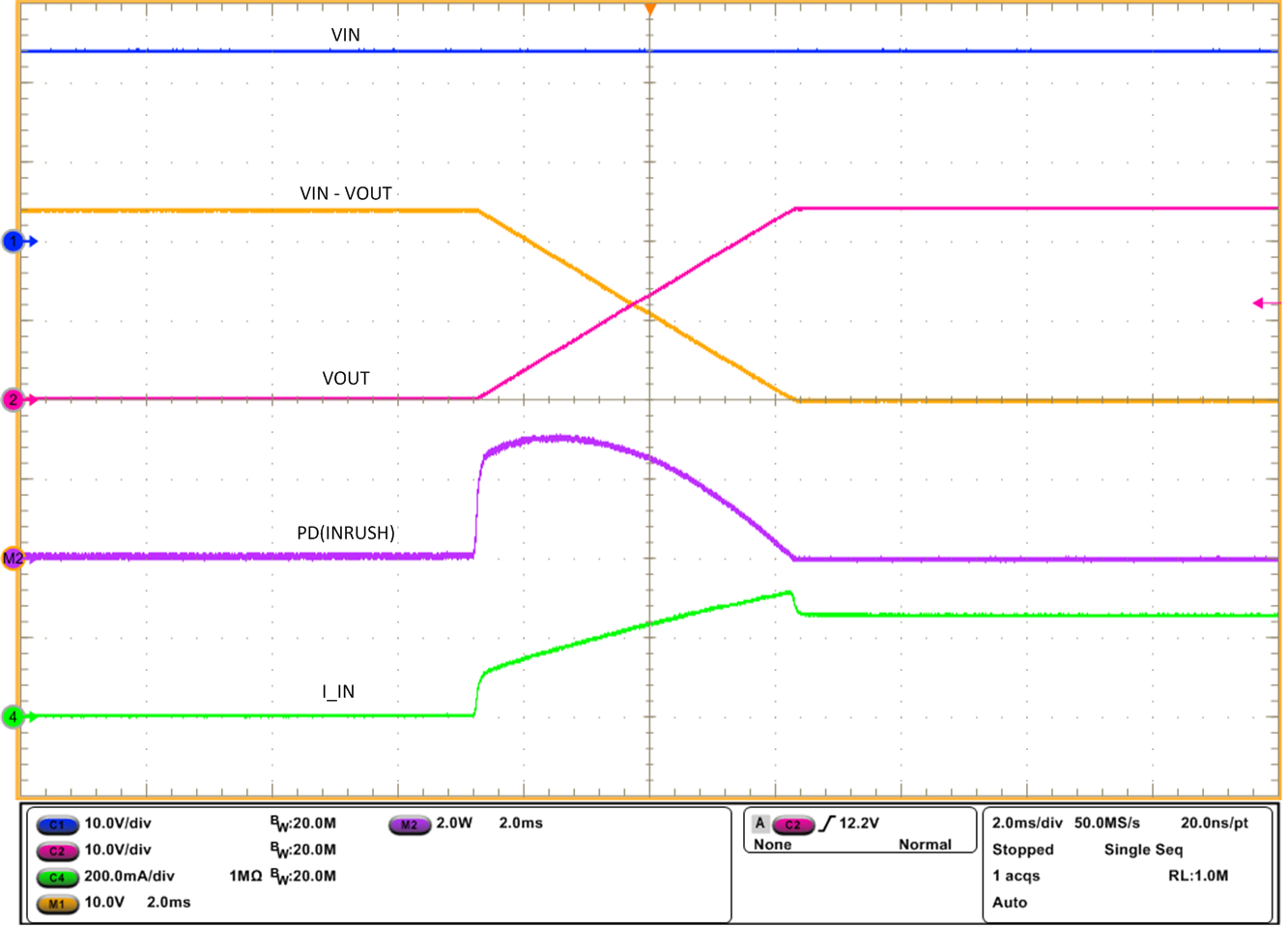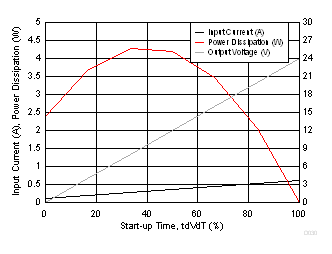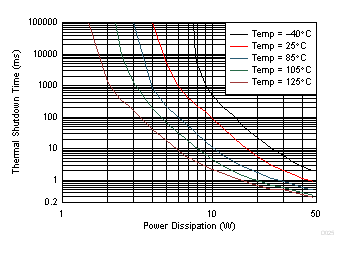JAJSF90F October 2017 – December 2021 TPS2662
PRODUCTION DATA
- 1 特長
- 2 アプリケーション
- 3 概要
- 4 Revision History
- 5 Device Comparison Table
- 6 Pin Configuration and Functions
- 7 Specifications
- 8 Parameter Measurement Information
-
9 Detailed Description
- 9.1 Overview
- 9.2 Functional Block Diagram
- 9.3
Feature Description
- 9.3.1 Undervoltage Lockout (UVLO)
- 9.3.2 Overvoltage Protection (OVP)
- 9.3.3 Hot Plug-In and Inrush Current Control
- 9.3.4 Reverse Polarity Protection
- 9.3.5 Overload and Short-Circuit Protection
- 9.3.6 Reverse Current Protection
- 9.3.7 FAULT Response
- 9.3.8 IN, OUT, RTN, and GND Pins
- 9.3.9 Thermal Shutdown
- 9.4 Device Functional Modes
-
10Application and Implementation
- 10.1 Application Information
- 10.2 Typical Application
- 10.3 System Examples
- 10.4 Do's and Don'ts
- 11Power Supply Recommendations
- 12Layout
- 13Device and Documentation Support
- 14Mechanical, Packaging, and Orderable Information
パッケージ・オプション
メカニカル・データ(パッケージ|ピン)
- DRC|10
サーマルパッド・メカニカル・データ
- DRC|10
発注情報
10.2.2.4.2 Case 2: Start-Up With Load —Output Capacitance C(OUT) and Load Draws Current During Start-Up
When the load draws current during the turn-on sequence, additional power is dissipated in the device. Considering a resistive load RL(SU) during start-up, typical ramp-up of output voltage, Figure 10-4 shows load current and the instantaneous power dissipation in the device. Figure 10-5 plots Instantaneous power dissipation with respect to time.

| VIN = 24 V | RL(SU) = 96 Ω | ||
| CdVdT = 10 nF | COUT = 22 µF | ||

| VIN = 24 V | RL(SU) = 96 Ω | ||
| CdVdT = 10 nF | COUT = 22 µF | ||
The additional power dissipation during start-up is calculated using Equation 10.

Total power dissipated in the device during start-up is given by Equation 11.

Total current during start-up is given by Equation 12.

For the design example under discussion,
Select the inrush current I(INRUSH) = 0.1 A and tdVdT calculated using Equation 8 is 5.28 ms.
For a given start-up time, CdVdT capacitance value calculated using Equation 2 is 10.7 nF for tdVdT = 5.28 ms and VIN = 24 V.
Choose the closest standard value: 10.0 nF and 16-V capacitor.
The inrush power dissipation due to output capacitor alone is calculated using Equation 9 and it is 1.2 W. Considering the start-up with 96-Ω load, the additional power dissipation calculated using Equation 10 is 1 W. The total device power dissipation during start-up is 2.2 W
The power dissipation with or without load, for a selected start-up time must not exceed the thermal shutdown limits as shown in Figure 10-6.
From the thermal shutdown limit graph, at TA = 125°C, thermal shutdown time for 2.2 W is close to 580 ms. It is safe to have a minimum 30% margin to allow for variation of the system parameters such as load, component tolerance, input voltage and layout. Selected 10-nF CdVdT capacitor and 5.28-ms start-up time (tdVdT) are well within the limit for successful start-up with 96-Ω load.
Higher value C(dVdT) capacitor can be selected to further reduce the power dissipation during start-up.
 Figure 10-6 Thermal Shutdown Time vs Power Dissipation
Figure 10-6 Thermal Shutdown Time vs Power Dissipation